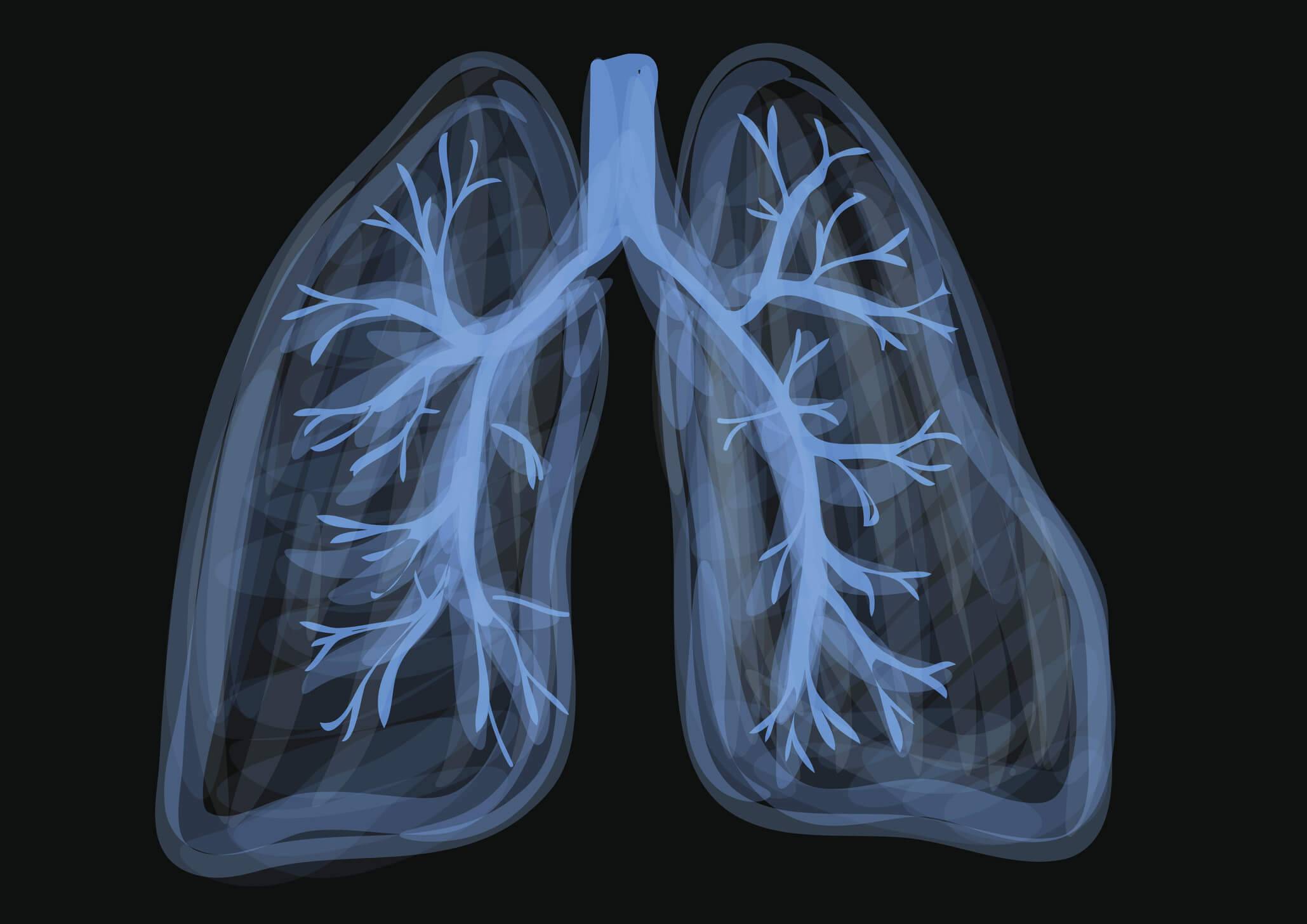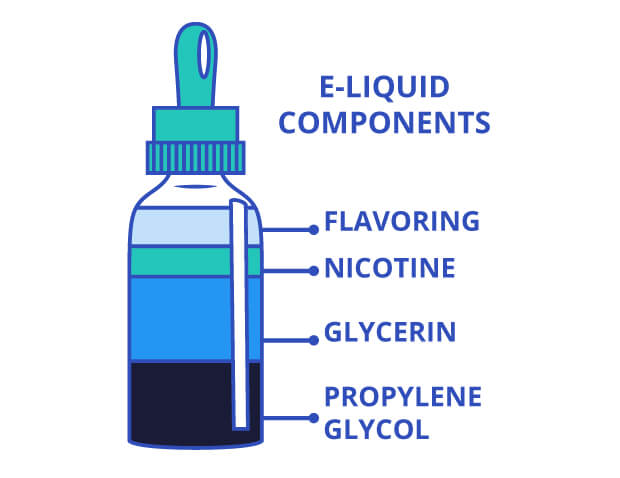WARNING: This product contains nicotine. Nicotine is an addictive chemical.
E-liquids, also known as a vape juice, contain a variety of chemicals that are heated and turned into an aerosol that is inhaled by consumers. While e-cigarettes produce fewer harmful chemicals than traditional cigarettes, they still pose a risk to lung health. Individuals who have pre-existing lung conditions or are pregnant should avoid using e-cigarettes and other vaping products. How would e-liquid affect your lungs? How to choose the e-liquid to decrease the risks to damage your lungs if you regularly vape?

What e-liquid consist of?
E-liquid, also known as vape juice, is the liquid that is vaporized in electronic cigarettes or vaporizers. E-liquids are typically made up of a base liquid, flavorings, and nicotine (although some e-liquids are nicotine-free). The base liquid is typically a combination of propylene glycol (PG) and vegetable glycerin (VG), which are both safe for human consumption. PG is known for its ability to carry flavor and produce a stronger throat hit, while VG produces thicker clouds of vapor and adds sweetness to the e-liquid. Flavorings can range from simple fruit or dessert flavors to more complex blends, and are usually made up of natural or artificial flavor compounds. Nicotine, when present, is added in varying concentrations and can be derived from tobacco or synthesized in a lab. The nicotine salt is incredibly smooth and commonly used for most disposables since its invention.

What ingredients in e-liquid would affect your lungs?
One of the primary concerns with e-liquid and lung health is the presence of nicotine. Nicotine effects are necessary for people who want to quit smoking or just switch from ordinary cigarettes. However, nicotine is a highly addictive substance that can have a range of negative effects on the body, including increasing heart rate and blood pressure, and contributing to the development of cardiovascular disease. Nicotine is also a potent vasoconstrictor, meaning it can narrow the blood vessels in the lungs and make it more difficult to breathe. Long-term exposure to nicotine through e-cigarette use may increase the risk of developing chronic lung diseases such as COPD.
Another concern with e-liquid and lung health is the presence of flavorings and other chemicals. Some flavorings in e-liquid such as diacetyl, which has been linked to a lung condition called bronchiolitis obliterans, also known as “popcorn lung.” And even the most commonly used chemicals such as propylene glycol and vegetable glycerin, can cause irritation and inflammation in the lungs for long-term use.
Purity is an important consideration when it comes to e-liquid ingredients. Low-quality ingredients in e-liquid can contain impurities that can affect the taste and consistency of the e-liquid, as well as potentially harmful toxins. As such, reputable e-liquid manufacturers take great care to source their ingredients from reliable suppliers and rigorously test each batch of e-liquid to ensure its purity and safety.
Overall, KEYSTONE choose the e-liquid carefully, perfectly matching disposable vapes to create a satisfying and enjoyable vaping experience.
What chemicals are in vape emissions? Are they harmful to your lungs?
When the ingredients in e-liquid are heated, they can produce a complex mixture of compounds. Most of them are safe to inhale, and some of them may increase the risk of lung damage, including acetaldehyde, acrolein, and formaldehyde, acrolein, aldehydes, volatile organic compounds (VOCs), and polycyclic aromatic hydrocarbons (PAHs). The chemicals can be harmful to your lungs and the key to protect your lungs is to control the chemicals concentration to a limited strength.
KEYSTONE would carry out dozens of rigorous tests to ensure that the aerosol of every single piece of disposable vape product is to the standard and try its best to decrease the risks to your lungs.
How to decrease the risks of e-liquid damaging your lungs?
While more research is needed to fully understand the long-term health effects of exposure to the chemicals in vapes, it is clear that they have the potential to be harmful to your lungs. If you are a regular vaper, it is important to be aware of the potential risks and take steps to decrease the risks of e-liquid to damage your lungs. Here are some suggestions:
Avoid using e-cigarettes and traditional cigarettes altogether. If you are trying to quit smoking, the best way is to stop smoking and decrease the nicotine strength gradually.
If you are a regular e-cigarette user, it is important to choose high-quality e-liquids or prefilled vapes that are free of diacetyl and other harmful additives from reputable manufacturers that follow strict quality control standards. Look for e-liquids or disposables that have been independently tested for safety and quality, and avoid purchasing from unverified sources.
Set limits on your vaping time. One way to do this is to establish a daily or weekly limit on the amount of time you spend on vaping to decrease the risks.
It should be noted that vaping is not risk-free. Non-smokers, pregnant women and people who have lung desease or pre-existing respiratory conditions should not vape. People who regularly vape should monitor for symptoms affecting your lung health and seek medical attention if you feel unwell.
In conclusion, the relationship between e-liquid and lung health is complex and requires further long-term research.
If you want to know more, please refer to this article:
